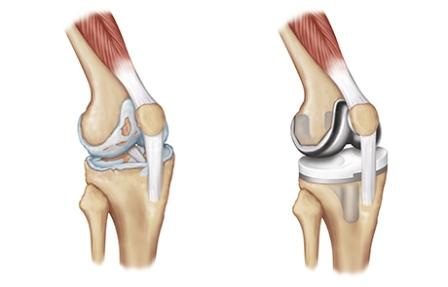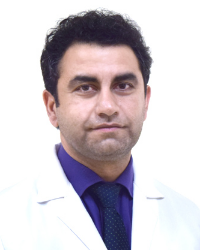Arthritis Of Knee Joint
Knee osteoarthritis is the most common form of osteoarthritis. In the first stage, symptoms are mild, but by the fourth, a person may need surgery.
Osteoarthritis (OA) of the knee affects the bones, the cartilage, and the synovium in the knee joint.
Cartilage is a slippery tissue that provides a smooth surface for joint motion and acts as a cushion between the bones.
Synovium is soft, and it lines the joints. It produces fluid, called synovial fluid, for lubrication, and it supplies nutrients and oxygen to the cartilage.
As these functions break down, they no longer protect the bones of the knee joint, and bone damage occurs.
TKR with Minimally Invasive technique For Knee Joint

The Minimally Invasive Subvastus technique differs completely from the conventional technique. In the conventional surgery, the skin is cut 15-20cm along with the muscles in front of the knee and thigh, the kneecap is flipped and the thigh and leg bones are separated from each other to perform the conventional surgery resulting in prolonged post-operative pain and recovery. Whereas in the Minimally Invasive Subvastus technique the skin is cut only 8-10cm.The muscles are preserved by pushing them to the side without cutting them. The kneecap is not flipped and the thigh and leg bones are not separated but are cut in place. All these resulting in less pain and quick recovery.
Along with good pain control measures, minimal pain after the surgery is ensured. The patient will be able to lift the leg immediately after the surgery and can stand and walk with support the same day. The knee can be bent unto 90 degrees and the patient will be able to walk at least 100 steps by the 3rd day at the time of discharge. After 2 weeks time, they will be able to walk independently without any support and getting up from the sitting position becomes easy in 1 to 2 months time. Within 2 to 3 months, they will be able to stand for a long time and walk any distance without suffering from any heaviness in the thigh muscles. In other words, the patient tends to forget the knee surgery in 2-3 months and will be able to resume their day to day activities comfortably.
Top Doctors In India For TKR with Minimally Invasive technique For Knee Joint

Dr. Suneel Kumar
30 years of experience , New Delhi, Delhi/NCR, India

Dr. Manu Bora
12 years of experience , Gurugram, Delhi/NCR, India

Dr. Bhushan Nariani
20 years of experience , New Delhi, Delhi/NCR, India

Dr. Vivek Mittal
25 years of experience , New Delhi, Delhi/NCR, India
Top Hospitals In India For TKR with Minimally Invasive technique For Knee Joint
Jaypee Hospital, Noida
Established in : 2013
Fortis Memorial Research Institute, Gurgaon, Gurugram
Established in : 2013
Medanta - The Medicity, Gurugram
Established in : 2009
Breach Candy Hospital Trust, Mumbai
Established in : 1950






